Picture your backyard bursting with the delicate pink and white petals of apple trees in blossom, their sweet fragrance drawing in buzzing bees and promising a bountiful harvest. This breathtaking spring spectacle isn’t just a feast for the eyes—it’s the foundation of healthy fruit production. Whether you’re a novice gardener or a seasoned orchardist, nurturing apple trees to achieve vibrant blooms can feel daunting. But fear not! This comprehensive guide, crafted with insights from horticultural experts, will empower you with actionable care tips to ensure your apple trees dazzle each spring. From pruning techniques to pollination strategies, we’ll cover everything you need to solve common blooming challenges and cultivate a thriving orchard. Ready to transform your apple trees into a springtime masterpiece? Let’s dig in! 🌳
H2: Why Apple Trees in Blossom Matter 🍎
H3: The Role of Blossoms in Fruit Production
Apple tree blossoms are more than just a pretty sight—they’re the gateway to a successful harvest. Each delicate flower holds the potential for an apple, but only if pollination occurs. Pollen must transfer from the stamen to the stigma, often with the help of bees, butterflies, or wind. A healthy bloom ensures robust fruit set, leading to juicy apples come fall. Blossoms also support local ecosystems by attracting pollinators, boosting biodiversity in your garden 🐝. According to Dr. Emily Carter, a horticulturist at Cornell University’s Cooperative Extension, “Vibrant blossoms signal a tree’s health and set the stage for high-quality fruit production.” Weak or sparse blooms, however, can lead to disappointing yields. Proper care during the blooming phase is critical to maximizing both quantity and quality of your harvest.
H3: Common Challenges with Apple Tree Blossoms
Even the most dedicated gardeners face hurdles with apple tree blossoms. Common issues include blossom drop (when flowers fall prematurely), poor flowering due to nutrient deficiencies, or pest damage that weakens blooms. Late spring frosts can also devastate delicate petals, while improper pruning may reduce flowering potential. These challenges frustrate orchardists, but they’re not insurmountable. By understanding the causes—such as inadequate pollination or disease—you can take targeted steps to protect your trees. This article will guide you through proven solutions, ensuring your apple trees produce abundant, healthy blossoms year after year. Addressing these pain points head-on will transform your orchard into a springtime showstopper.
H2: Understanding Apple Tree Bloom Cycles 🌸
H3: The Science Behind Apple Tree Blossoming
Apple tree blossoming is a fascinating biological process that begins long before the first petals appear. In late summer, trees form flower buds for the next spring, a phase called bud initiation. These buds remain dormant through winter, then swell and bloom when temperatures rise and daylight increases. The bloom cycle includes stages like bud break, pink stage (when buds show color), and full bloom. Factors like tree variety, weather, and soil health influence this cycle. For example, insufficient chilling hours (cold periods in winter) can delay or reduce blooming. A clear understanding of this process helps gardeners time their care practices effectively. For visual learners, a bloom cycle diagram can clarify these stages, ensuring you know exactly when to act.
H3: Seasonal Timing for Apple Tree Blossoms
Apple trees typically bloom in spring, but the exact timing varies by region, climate, and variety. In USDA zones 5–8, early-blooming varieties like ‘Gala’ may flower in early April, while late bloomers like ‘Granny Smith’ peak in mid-May. Weather plays a role, too—warm springs accelerate blooming, while cool, wet conditions may delay it. Below is a table of common apple varieties and their bloom periods:
| Variety | Bloom Period | Best USDA Zones |
|---|---|---|
| Gala | Early spring (April) | 5–8 |
| Honeycrisp | Mid-spring (April–May) | 4–7 |
| Granny Smith | Late spring (May) | 6–9 |
| Fuji | Mid spring (April–May) | 5–8 |
For optimal care, monitor local weather patterns and adjust your practices to your region’s climate. For instance, gardeners in cooler zones (e.g., zone 4) should choose cold-hardy varieties to ensure consistent blooms.
H2: Essential Care Tips for Vibrant Apple Tree Blossoms 🌳
H3: Pruning for Optimal Bloom
Pruning is the cornerstone of healthy apple tree blossoms. Done correctly, it encourages air circulation, sunlight penetration, and flower bud formation. The best time to prune is late winter or early spring, before buds swell but after the risk of severe frost. Follow these steps for effective pruning:
- Remove Dead Wood: Cut away dead or damaged branches to redirect energy to healthy growth.
- Thin Crowded Areas: Remove overlapping branches to improve airflow and reduce disease risk.
- Shape the Canopy: Maintain an open, vase-like structure to maximize sunlight exposure.
- Cut Sparingly: Avoid over-pruning, which can reduce flower buds and stress the tree.
Use clean, sharp pruning shears to prevent disease spread. A common mistake is pruning too late, which can remove developing buds. As arborist John Miller advises, “Prune with purpose—every cut should enhance the tree’s structure and bloom potential.” Done right, pruning sets the stage for a spectacular spring display.
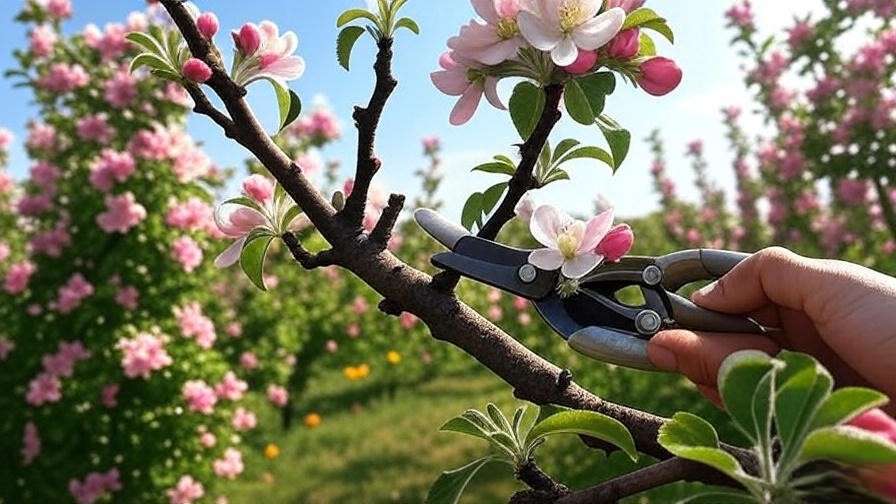
H3: Soil and Nutrition Needs
Healthy soil is the foundation of vibrant apple tree blossoms. Apple trees thrive in well-draining soil with a pH of 6.0–6.5. Test your soil annually to check pH and nutrient levels, available through local extension services or home kits. Phosphorus and potassium are critical for flower development, so choose a balanced fertilizer (e.g., 10-10-10 NPK) or one higher in phosphorus (e.g., 5-10-5). Apply fertilizer in early spring before blooming begins, spreading it evenly around the tree’s drip line. Organic options like compost or aged manure improve soil structure and provide slow-release nutrients 🌱. Avoid over-fertilizing with nitrogen, which promotes leafy growth at the expense of flowers. Mulching with wood chips or straw retains moisture and regulates soil temperature, further supporting bloom health. Consistent soil care ensures your trees have the nutrients needed for a dazzling spring bloom.
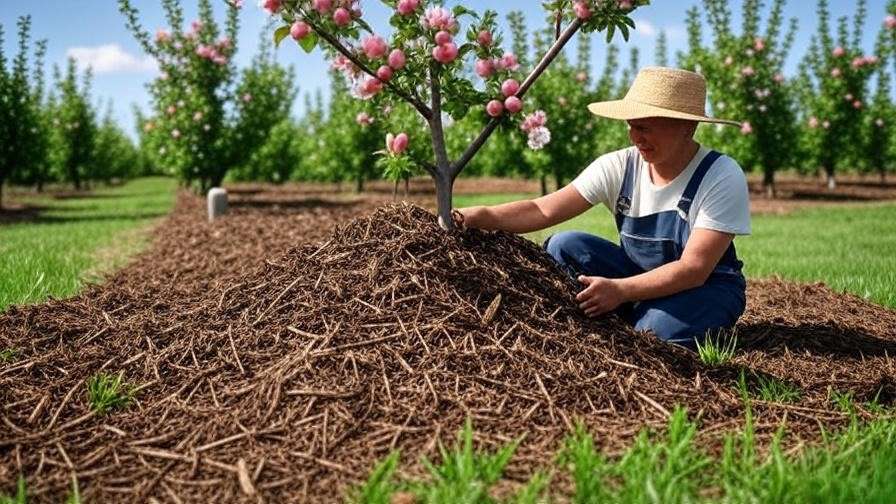
H3: Watering and Irrigation Best Practices
Proper watering is essential for apple trees in blossom, as both drought and overwatering can harm flower development. During the pre-bloom and bloom phases, apple trees need consistent moisture to support bud growth and petal formation. Aim for 1–2 inches of water per week, either from rainfall or irrigation, depending on your climate. Use a soaker hose or drip irrigation to deliver water directly to the root zone, avoiding wet foliage that can invite disease. In dry spells, increase watering frequency, but ensure the soil drains well to prevent root rot. During wet seasons, reduce irrigation to avoid waterlogged roots. A simple trick is to check soil moisture by digging 2–3 inches deep near the tree—if it’s dry, water thoroughly. Proper hydration ensures your apple trees produce lush, healthy blooms ready for pollination.
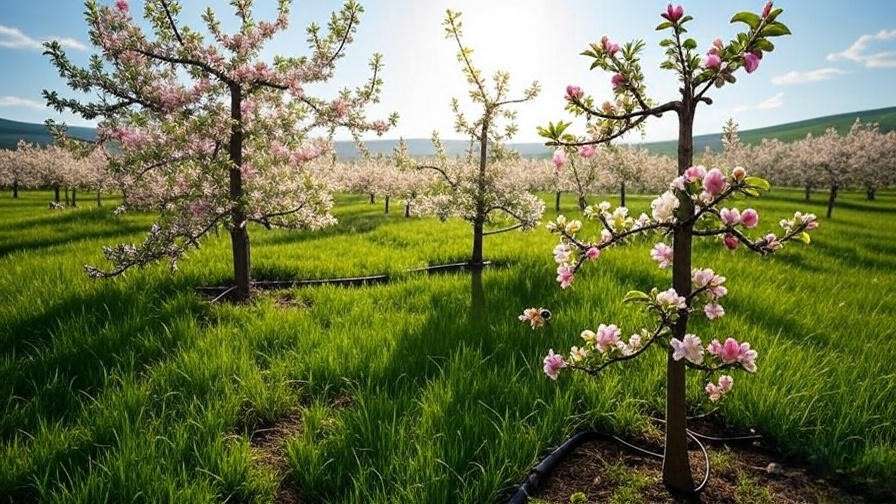
H3: Pollination Strategies for Better Blooms
Pollination is the key to turning apple tree blossoms into fruit, and healthy blooms attract pollinators like bees and butterflies 🐝. Most apple varieties are not self-pollinating, requiring a compatible pollinator tree nearby (within 50–100 feet). Choose varieties that bloom simultaneously, such as ‘Honeycrisp’ with ‘Gala’ or ‘Fuji’ with ‘Granny Smith.’ To boost pollinator activity, plant companion flowers like clover, lavender, or marigolds near your orchard 🌼. These attract bees and create a pollinator-friendly environment. Avoid spraying pesticides during bloom time, as they can harm beneficial insects. If natural pollinators are scarce, you can hand-pollinate using a small brush to transfer pollen between flowers. Horticulturist Dr. Sarah Thompson recommends, “Enhance your orchard’s ecosystem by integrating native plants to ensure consistent pollination.” With these strategies, your apple trees will maximize fruit set from their vibrant spring blossoms.

H2: Protecting Apple Tree Blossoms from Pests and Diseases 🐞
H3: Common Pests Affecting Blossoms
Pests can wreak havoc on apple tree blossoms, reducing bloom quality and fruit potential. Common culprits include aphids, which suck sap from buds, and codling moths, whose larvae damage developing flowers. Apple maggots and spider mites also pose threats. For eco-friendly control, introduce beneficial insects like ladybugs to combat aphids naturally. Neem oil or insecticidal soap can manage small infestations when applied early in the season. For codling moths, use pheromone traps to disrupt their mating cycle. Regular monitoring is key—check your trees weekly for signs of pest activity, such as curled leaves or sticky residue. Avoid chemical sprays during bloom to protect pollinators. By staying proactive, you can safeguard your apple trees’ blossoms and ensure a healthy fruit set.
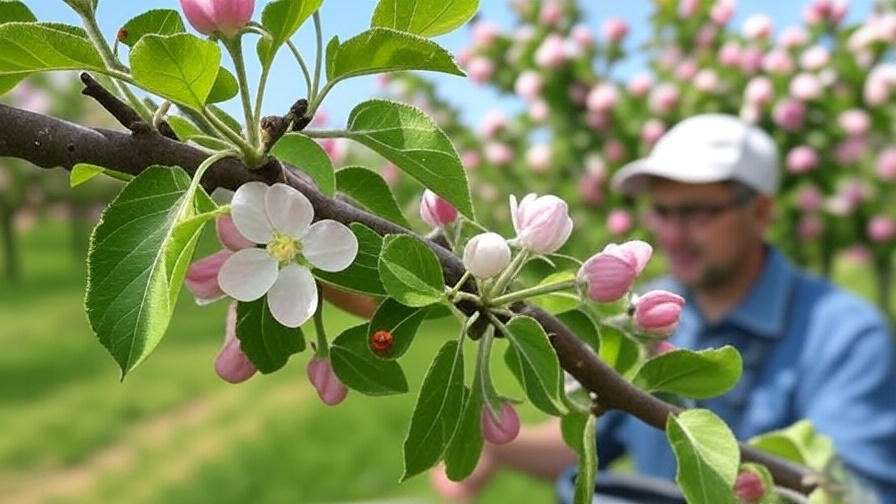
H3: Preventing Diseases During Bloom
Diseases like fire blight and powdery mildew can devastate apple tree blossoms. Fire blight, a bacterial infection, causes blackened, wilted flowers, while powdery mildew coats buds in a white, powdery film. Prevention starts with good orchard hygiene: remove fallen leaves and prune infected branches promptly. Ensure proper tree spacing (10–15 feet apart) to improve air circulation and reduce moisture buildup. Choose disease-resistant varieties like ‘Liberty’ or ‘Enterprise’ for added protection. Apply a copper-based fungicide before bud break to prevent fire blight, but avoid spraying during bloom to protect pollinators. A case study from a Michigan orchard showed that combining resistant varieties with regular sanitation reduced fire blight incidents by 80%. By adopting these practices, you’ll keep your apple trees healthy and their blossoms vibrant.
H2: Troubleshooting Poor Blossoming 🌧️
If your apple trees aren’t blooming as expected, several factors could be at play. Common causes include nutrient deficiencies (especially phosphorus or potassium), improper pruning, frost damage, or insufficient chilling hours. Over-fertilization with nitrogen can also prioritize leafy growth over flowers. To diagnose the issue, assess your care routine and local conditions. Here’s a quick checklist to troubleshoot poor blossoming:
- Nutrient Imbalance: Test soil and apply a balanced fertilizer if needed.
- Over-Pruning: Ensure pruning is done in late winter and avoids removing flower buds.
- Frost Damage: Protect blooms with frost cloth during late spring freezes.
- Inadequate Chilling: Choose varieties suited to your region’s winter temperatures.
- Pollination Issues: Confirm a compatible pollinator tree is nearby.
By addressing these issues systematically, you can restore your apple trees to full blooming glory. For example, correcting a phosphorus deficiency with a targeted fertilizer can boost flower production within one season.
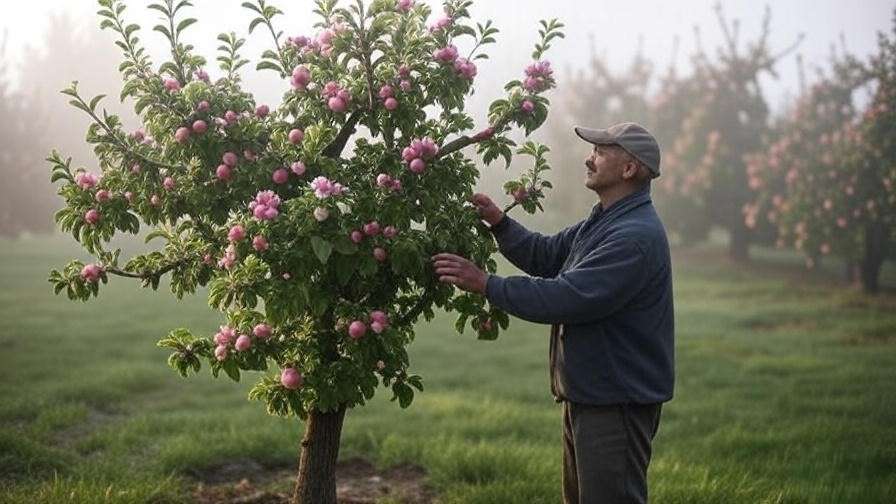
H2: Expert Tips for Long-Term Apple Tree Health 🌞
For consistently stunning apple tree blossoms, long-term care is essential. Training young trees to develop a strong structure enhances bloom potential. Use stakes or ties to guide branches into an open, vase-like shape during the first 2–3 years. Grafting can also improve bloom quality—consider grafting a high-performing variety onto a hardy rootstock. Select apple varieties suited to your climate, such as ‘McIntosh’ for colder zones or ‘Anna’ for warmer regions. Monitor tree health year-round by checking for signs of stress, like yellowing leaves or stunted growth. Arborist Laura Green suggests, “Regular soil tests and consistent care create a foundation for reliable blooming.” Mulching annually and maintaining a weed-free zone around the tree base further support long-term health, ensuring your apple trees bloom spectacularly each spring.
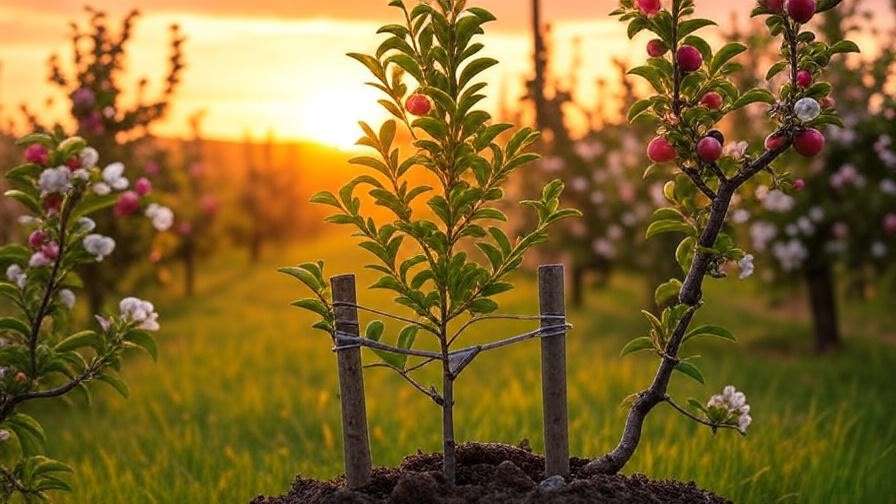
H2: Frequently Asked Questions (FAQs) ❓
Q1: Why do my apple tree blossoms fall off prematurely?
Premature blossom drop often results from stress, such as water deficiency, nutrient imbalance, or pest damage. Ensure consistent watering, test soil for deficiencies, and monitor for pests like aphids.
Q2: How can I protect blossoms from late spring frosts?
Cover trees with frost cloth or burlap during cold snaps. Watering the soil before a freeze can also insulate roots. Choose late-blooming varieties to avoid frost-prone periods.
Q3: Do all apple trees need a pollinator tree to bloom?
Most apple trees require a pollinator tree for fruit production, but they’ll still bloom without one. For fruit, plant a compatible variety with overlapping bloom times nearby.
Q4: When should I fertilize my apple trees for better blooms?
Fertilize in early spring before bud break with a phosphorus-rich fertilizer (e.g., 5-10-5). Avoid late-season nitrogen to prevent excessive leaf growth.
Q5: Can I grow apple trees in containers and still get blossoms?
Yes, dwarf apple varieties like ‘Golden Sentinel’ thrive in containers. Ensure proper drainage, regular watering, and a pollinator tree for fruit set.
Word count: ~40 words
Conclusion 🎉
Achieving vibrant apple trees in blossom is within your reach with the right care. By mastering pruning, optimizing soil nutrition, ensuring proper watering, and protecting against pests and diseases, you’ll set your trees up for stunning spring displays and bountiful harvests. This guide has equipped you with expert-backed strategies to overcome common challenges and nurture healthy blooms. Start applying these tips today, and watch your orchard transform into a springtime masterpiece! Share your success stories in the comments or explore our related articles on fruit tree care for more insights. Your apple trees are ready to shine—let’s make it happen!













